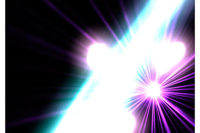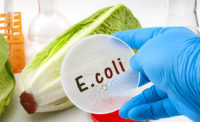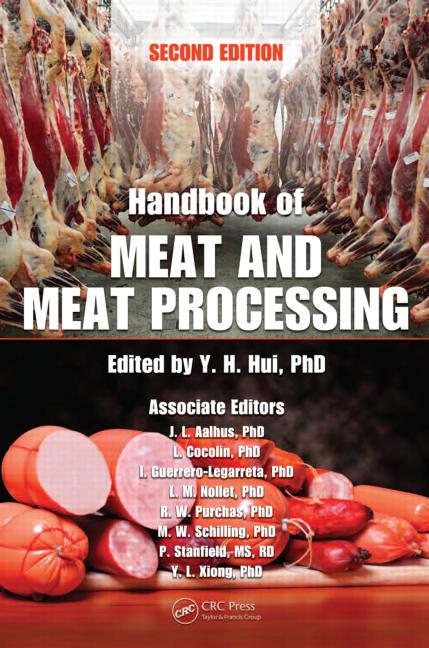Technology has come a long way and we see improved food safety as a result. More food companies are beefing up their food-safety programs, so instead of responding to contaminations, they are better prepared to prevent such incidents from occurring. And with this shift toward prevention comes many advances in technology that help food companies detect, prepare and prevent.
A critical step in an effective food-safety program is detection. If we can detect events through a faster test method, more sensitive devices or just from closer observation, we can improve detection and hopefully prevent future contaminations. The introduction of X-ray in meat manufacturing is one area that has exploded.
Developments in the speed of microbiological test results and the adoption of third-party video-auditing systems are additional areas in which technology has leapt forward to make a mark on food safety. Many professionals would say that there is no “silver bullet” for food safety but instead recommend a multi-hurdle approach. Each piece of technology contributes to the entire food-safety culture.
X-ray advances
Organizations pay hundreds of thousands of dollars each year in dental claims as a result of bones, stones or other hard objects found in food. However, new X-ray technologies, which can be successfully used in a wet, cold, meaty environment, coupled with current X-ray equipment designs that are more sanitation-friendly, have a smaller footprint and are more sensitive, give us an additional — and very effective — tool in our toolbox.
Trying to find small or tiny objects in ground product can feel a lot like trying to find a needle in a haystack. When we grind products, we take big pieces of meat and cut them smaller and smaller. The same is true for any objects that may have entered into or been present in the product stream at the grinding step of the process. Our X-ray system is unique in that it can detect objects, such as bone, in large quantities of meat trimmings.
There are four key factors that play a role in the level of sensitivity you can achieve with X-ray technology, including: the depth of the stream of meat; the variability of the density of the base stream of meat; the speed at which the meat passes through the detection zone; and the delta between the density of the foreign object and the base stream of meat.
Meat trimmings are generally not presented in a manner of constant depth or density. With new technology, we can maximize the sensitivity of the X-ray by presenting the meat, beef and pork trimmings at a constant depth.
The X-ray equipment is strategically placed at the front of the process, which allows for detection and removal of bone fragments when they are at their largest size. Removing the bone fragments early in the process gives you the greatest opportunity to not only detect them but also remove them.
This new technology allows us to examine the rejected meat and remove the object, such as a bone fragments or piece of metal (such as bird shot). We can then share with our raw-material suppliers a picture of the findings, along with a count and weight of the bone fragments. This data is very helpful, leading to open discussions with our suppliers to establish areas of improvement.
Rapid Listeria detection
New technology also is aiding in rapid detection of Listeria. The test method uses targeted bacteriophages that attach to Listeria and illuminate so they can be detected, producing a result in six hours with no enrichment. Combined with the rapid-detection technology is a powerful software package that helps manage the data and improves our environmental monitoring program. The software includes scheduling, analyzing and reporting tools.
The expectations for the speed at which a facility obtains microbiological results continue to increase. It is natural to want immediate feedback on performance. Using a new technology in Listeria detection, we are able to obtain a result from environmental monitoring or niche investigations while the equipment being tested is still disassembled, giving us the opportunity to go back and review or re-clean based on the rapid results. With the quick turnaround on results, we are performing more monitoring and can deploy cleaning, testing and design resources in areas where the sanitary designs are not perfect and can be improved.
Focus on inside operations
It’s important to keep an eye on the shop floor to maintain a culture of food safety. The busy work and the paperwork expectation can create a situation where we get complacent. Many companies have installed closed-captioned television (CCTV) security cameras to watch for unknown individuals in places they do not belong. This is a crucial step that can be enhanced by linking the video cameras to a third-party service.
Companies offering remote video auditing (RVA) services use our procedures and training materials to view and assess our process from afar. We tell them where we want them to monitor the production lines, and there are triggers in place to mark the video when deviations occur. The service reviews the marked video or watches real-time, communicating the observations back in a report with links to the video snippets. If a critical condition is observed, the service will phone or text us the nature of the situation, triggering immediate remedial action to occur. We use the reports to drive improvements or as training opportunities.
Building a food-safety culture requires laser-like focus on the process, continuous improvement and increasingly, new technology. We’ve seen new technology drive important changes, which keep us current in modern times. Due to the fact that there is not one device or technological advance to assure our products are safe, a hurdled approach using multiple techniques makes it easier to achieve safe food.








Report Abusive Comment